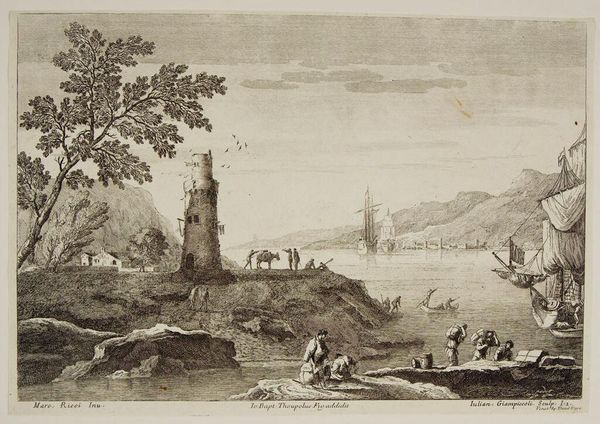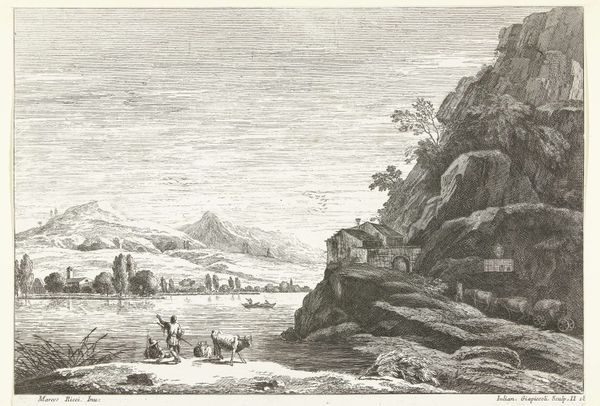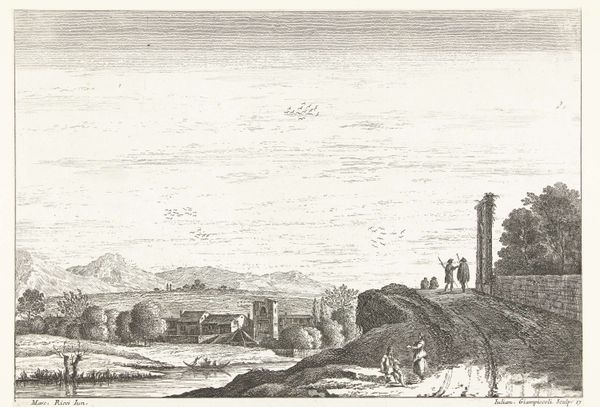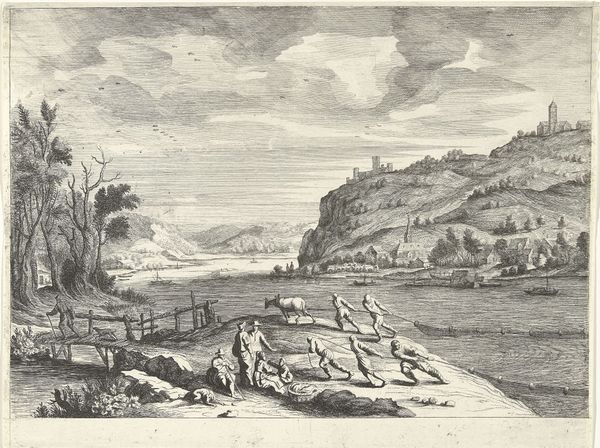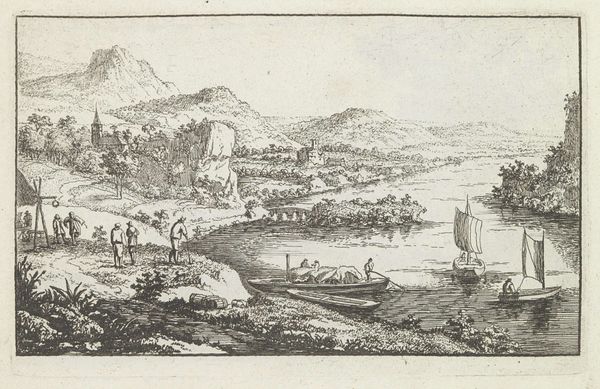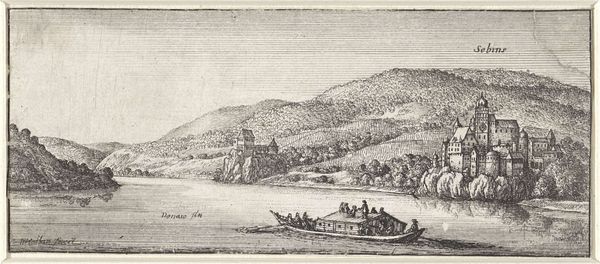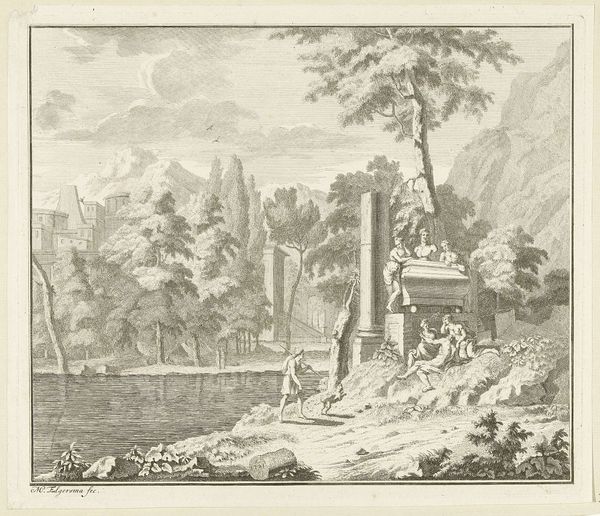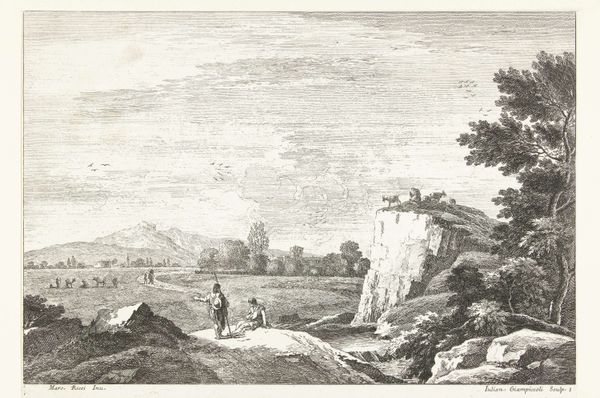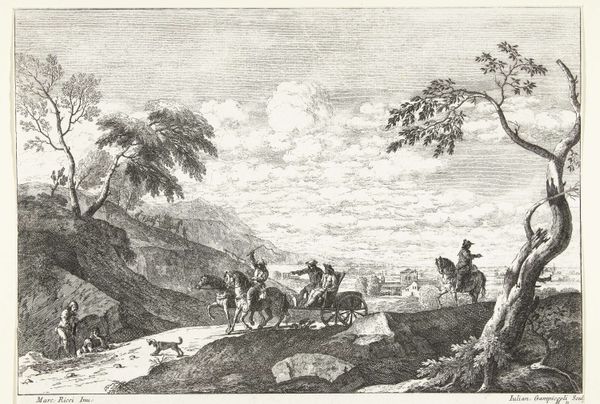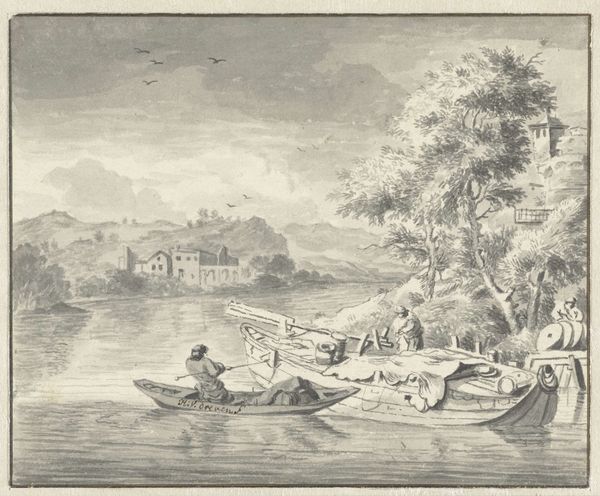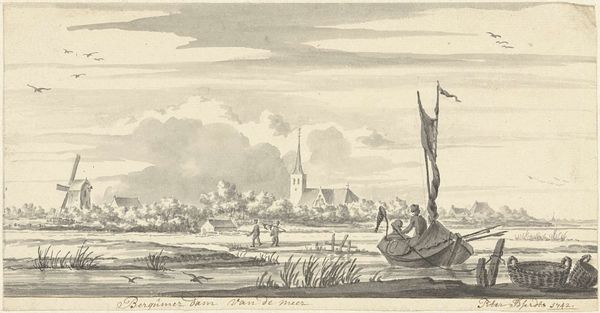
Kustlandschap met vuurtoren en schepen voor anker in baai 1739 - 1740
0:00
0:00
giulianogiampiccoli
Rijksmuseum
Dimensions: height 246 mm, width 349 mm
Copyright: Rijks Museum: Open Domain
Curator: Immediately, I'm drawn to the almost stark, graphic quality of the lines, aren’t you? It’s all shades of grey, precisely etched, with tiny figures animating this sweeping vista. Editor: It's an early print, made sometime between 1739 and 1740. The Rijksmuseum holds this impression of "Coastal Landscape with Lighthouse and Ships at Anchor in a Bay." The etching and engraving are by Giuliano Giampiccoli, after a design by Marco Ricci. Curator: So, an artisan translating someone else's artistic vision… It prompts me to consider Giampiccoli's labor. How many hours did he spend hunched over the plate, meticulously rendering Ricci’s ideas, line by painstaking line? It’s reproductive work, but skilled craft nonetheless. Editor: Absolutely. It points to the burgeoning print market and the democratization of imagery in the 18th century. Coastal scenes were incredibly popular, allowing those who might never see the sea a glimpse into the maritime world, or reminding those far from home of it. This picturesque imagery served as propaganda for the Republic and its sea power. Curator: The scale is impressive for a print of that time. And those delicate gradations, creating depth… It looks like incredibly painstaking labor. It would have been time-consuming to produce this print, as the tools were so specialized for etching and engraving. Editor: Yes, and landscape prints such as this reinforced ideas of trade, the vastness of Dutch territorial claims, and even served to remind wealthy citizens of their seaside properties and merchant fleets. This type of artwork did important ideological work during its period. Curator: Considering all the prints floating around at the time, each trying to make itself seen, there are social dynamics happening between printmaking, the labor to do it, and how consumers reacted. It also poses a question about copies and artistic status, really. What kind of value does an art piece like this hold to viewers? Editor: Exactly. Prints are both commodities and carriers of meaning. That interplay is precisely what gives them historical power. I think that interplay makes this particular artwork fascinating, don't you think? Curator: I completely agree, and I've gained a fresh appreciation for the technical mastery and the social world wrapped up in this beautiful object. Editor: It’s helped me remember just how influential prints such as this were in constructing public sentiment.
Comments
No comments
Be the first to comment and join the conversation on the ultimate creative platform.
